Results
-
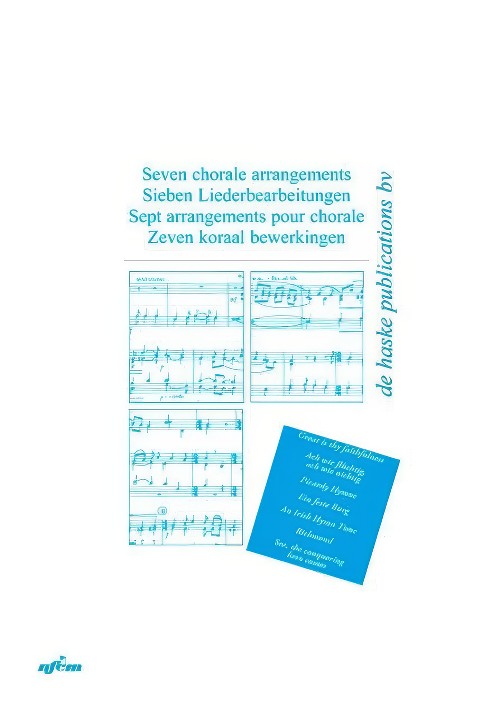 £13.99
£13.99150 Psalms (Part 4 in C BC)
For Trombone, Euphonium, Bassoon or Tuba
Estimated dispatch 7-14 working days
-
 £13.99
£13.99 -
 £13.99
£13.99150 Psalms (Part 3 in Bb TC)
For Trombone, Baritone, Euphonium (all in TC) or Bass Clarinet
Estimated dispatch 7-14 working days
-
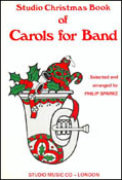 £99.95
£99.95Carols for Band (Concert Band Set) - Sparke, Philip
Designed to be playable by any combination from quartet to full brass band, wind band or orchestra, the arrangements in this book with provide a practical solution to all your carolling needs. Parts are divided into Soprano, Alto, Tenor and Bass so that any suitable instrumentation will sound well, providing an equal balance of players per voice is maintained. The carols are printed in alphabetical order so they are easy to find, and comprehensively indexed under both first line and name of tune.Score, Timpani and Percussion parts are available separately.Instrumentation is as follows: Brass BandWind BandStringsSopranoEb Soprano CornetSolo Bb CornetBb Repiano & Flugel1st Flute & Piccolo2nd FluteOboe1st Bb Clarinet1st Bb Trumpet/Cornet1st ViolinAlto2nd & 3rd Bb CornetSolo Eb Horn1st Bb Trombone2nd & 3rd Bb ClarinetsEb Alto Saxophone2nd Bb Trumpet/Cornet1st F Horn2nd ViolinTenor1st & 2nd Eb Horns1st & 2nd Bb Baritones2nd Bb Trombone1st Bb EuphoniumEb Alto ClarinetBb Tenor Saxophone2nd F Horn1st & 2nd TrombonesViolaBassBass Trombone2nd Bb EuphoniumEb BassBb BassBassoonBb Bass ClarinetEb Baritone SaxophoneBass TromboneEuphoniumTubaCello/BassTitles included:Angels from the Realms of GloryAs with Gladness Men of OldAway in a MangerBrightest and BestChristians AwakeCoventry CarolDeck the HallsDing Dong, Merrily on HighFirst NowellGod Rest ye Merry, GentlemenGood King WenceslasHark the Glad SoundHark, the Herald Angels SingHolly and the IvyI Saw Three ShipsIn Dulci JubiloIn the Bleak Mid-WinterInfant HolyInfant KingIt Came Upon a Midnight ClearJingle BellsLo, He Comes with Clouds DescendingLove Came Down at ChristmasO Come, All ye FaithfulO Come, O Come, EmmanuelO Little Town of BethlehemOf the Father's Love BegottenOnce in Royal David's CitySans Day CarolSee Amid the Winter's SnowSilent NightSussex CarolThou Didst Leave Thy ThroneUnto Us is Born a SonWe Wish You a Merry ChristmasWhile Shepherds WatchedThe Wind Band Set consists of 25 Parts:2 x 1st Flute/Piccolo1 x 2nd Flute1 x Oboe2 x 1st Clarinet2 x 2nd/3rd Clarinet1 x Alto Clarinet1 x Bass Clarinet1 x Bassoon1 x Alto Sax1 x Tenor Sax1 x Baritone Sax2 x 1st Trumpet/Cornet1 x 2nd Trumpet/Cornet1 x 1st Horn in F1 x 2nd Horn in F2 x 1st/2nd Trombone BC1 x Bass Trombone1 x Euphonium BC2 x Tuba
Estimated dispatch 7-14 working days
-
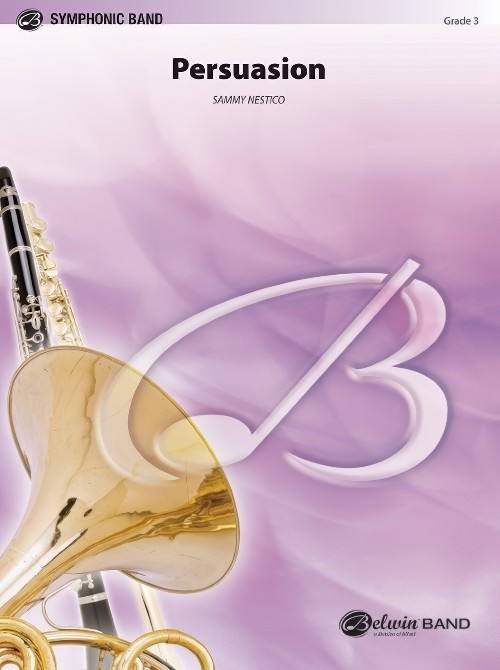 £66.95
£66.95Persuasion (Alto Saxophone Solo with Concert Band - Score and Parts) - Nestico, Sammy
Is there an alto saxophone player alive who would not give his eyeteeth to play this solo? Included with the arrangement are alternate solo parts for euphonium or tuba. Listen to this Sammy Nestico charmer, it may be the source of the term "wail"! Duration: 4.30
Estimated dispatch 7-14 working days
-
 £60.00
£60.00A Christmas Auld Lang Syne
Fond memories of good times and dear friends will magically come alive when you hear this beautiful and lush setting of We Wish You A Merry Christmas and Auld Lang Syne. Solo opportunities for euphonium and trumpet, along with comfortable ranges and modern harmonizations, highlight this skillfully crafted work. A creative touch of Jingle Bells brings this emotional and very playable arrangement to a satisfying close. A great holiday choice!
Estimated dispatch 7-14 working days
-
 £67.32
£67.32Allegro Francaise
Barat's "Andante and Allegro" has been a staple of trombone solo repertoire for decades, and now the Allegro has been excerpted and arranged for the Barnhouse "Spotlight" series by Andrew Glover. An excellent solo to showcase your trombone, euphonium, or horn soloist. Band accompaniment is a grade 3, and comes together with a minimum amount of rehearsal time. Solo part is grade 4. A great solo showpiece!
Estimated dispatch 7-14 working days
-
 £144.99
£144.99Andante & Rondo Wind Band Set (Score & Parts)
Antonio Capuzzi (August 1, 1755 - March 28, 1818) was an Italian violinist and composer who studied violin with Nazari and composition with Bertoni. In 1805 he moved to Bergamo, where he was professor of violin at the Instituto Musicale and leader of the orchestra at Teatro Riccardi. He was highly regarded there both as a teacher and a performer. Although popular in his day, most of his music is now forgotten; his most commonly performed piece today is the Concerto for Double Bass. All of Capuzzi's known compositions were written during his Venetian years. It was in Venice that Capuzzi became close friends with Domenico Dragonetti, Beethoven's virtuoso bassist. It is speculated that Capuzzi wrote his Concerto for Double Bass for Dragonetti. Gerald Oswald has made a fine arrangement of the second (Andante) and third (Rondo) movements of the concerto to feature either euphonium or tuba with concert band. The solo part is also available in an edition with piano accompaniment. 09:05
Estimated dispatch 7-14 working days
-
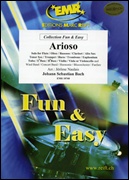 £89.60
£89.60ARIOSO (Flexible Solo with Easy Concert Band) - Bach, Johann Sebastian - Naulais, Jerome
Solo for Flute, Oboe, Basson, Clarinet, Alto Sax, Tenor Sax, Trumpet, Horn, Trombone, Euphonium, Tuba, Eb Bass, Violin, Viola or Cello. Duration: 4:45
Estimated dispatch 7-14 working days
-
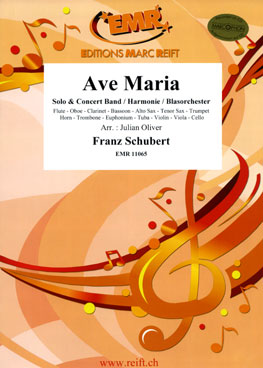 £97.40
£97.40AVE MARIA (Flexible Solo with Intermediate Concert Band) - Schubert, Franz - Oliver, Julian
Solo for Flute, Oboe, Clarinet, Bassoon, Alto Sax, Tenor Sax, Trumpet, Horn, Trombone, Euphonium, Tuba, Violin, Viola or Cello. Duration: 4:20
Estimated dispatch 7-14 working days
